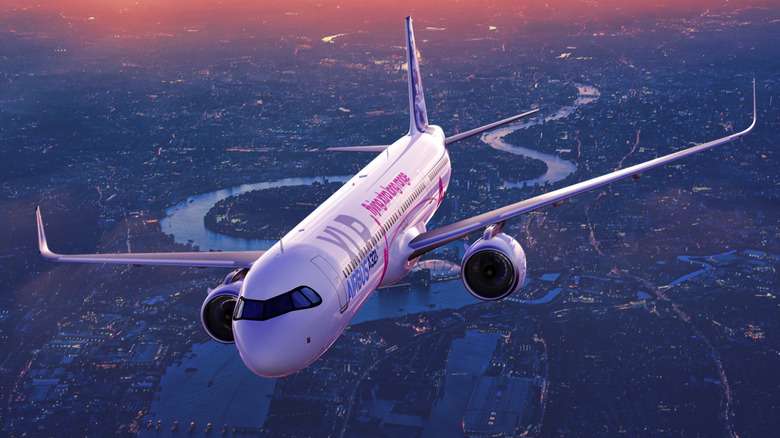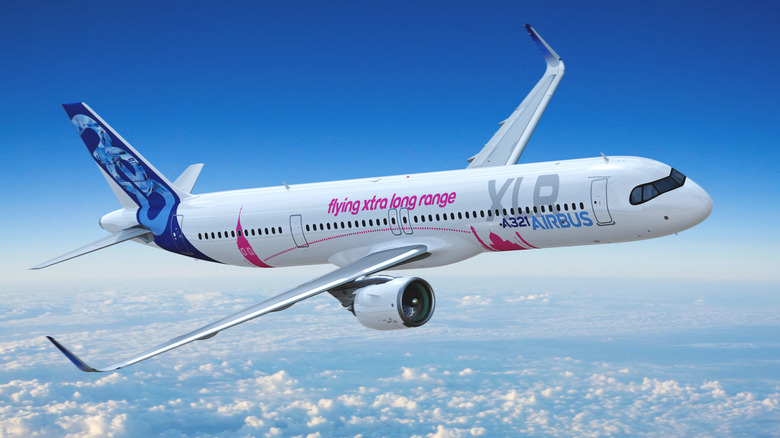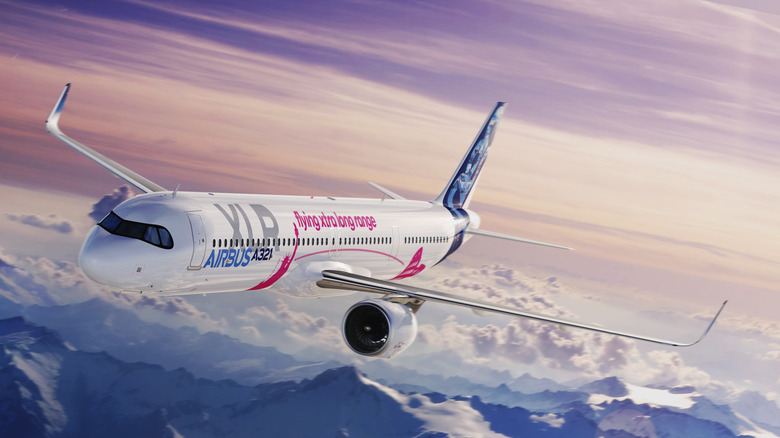What Makes The Airbus A321 XLR So Special? (And Which Boeing Plane Does It Replace?)
Airlines across the world are lining up to get their hands on the Airbus A321 XLR. There's something special about this particular aircraft that no other has offered until now. With a range of up to 5,400 miles and a flight time close to 11 hours, it's currently one of the longest-range single-aisle planes ever built. To put it simply, the Airbus A321 XLR can comfortably handle transatlantic flights — and even longer ones — without needing the size or fuel costs of a widebody aircraft.
For airlines, it solves a very specific problem — replacing the aging Boeing 757. The 757 once filled this middle-of-the-market space perfectly, but the problem is that Boeing never really built a proper follow-up to it. On the other hand, Airbus saw the gap and moved fast. With the A321 XLR, they have not only built something with more range compared to the 757, but it does it with 30% better fuel efficiency per seat. That's a big deal in today's competitive and cost-sensitive airline world.
A new way to connect cities with Airbus
The real magic of the A321 XLR lies in the kind of routes it makes possible. Since it is smaller and cheaper to operate compared to widebody passenger jets, airlines can use it to offer long-haul flights between cities that were once too small to connect directly. Instead of forcing passengers through big hubs like London or New York, they can now fly nonstop between places like Rome and Cleveland or Munich and Orlando. This flexibility is a true game-changer for airlines, as well as for travelers.
Let's take Icelandair, for example. The airline is clearly confident in the A321 XLR and planning to fully replace its aging 757 fleet with 13 of these jets by 2029. Its current A321 LR flights already reach cities like Seattle and Toronto; however, the XLR is expected to push that reach even farther, even to destinations like Rome, Zurich, and Munich. Since Iceland naturally works as a stopover point between Europe and North America, the XLR fits perfectly into the airline's strategy of connecting more cities with fewer stops.
The Airbus plane built for everyone
Another reason why airlines love this jet? It's the flexibility the A321 XLR offers. The aircraft works just as well for transatlantic flights as it does for shorter hops within Europe or Asia, giving airlines a wide range of options. In fact, legacy carriers like American and United are already placing orders. They are adding premium touches like lie-flat business class seats, making long-haul travel more comfortable. On the other hand, budget airlines, like Wizz Air in Hungary, are going in a different direction by maximizing cabin space with more economy seating to keep fares low. That's the beauty of this plane. It can be configured to fit just about any airline's business model.
Airbus has already locked in over 550 orders for the A321 XLR, showing just how much demand there is for this kind of aircraft. The first unit was delivered to Iberia in October, and more deliveries are rolling out fast. On the flip side, Boeing's 737 Max 10, its closest competitor, is still not certified and can't match the XLR's range. Boeing's decision not to build a true 757 replacement left a gap in the market, and Airbus moved quickly to fill it. So far, that move has paid off big time.


